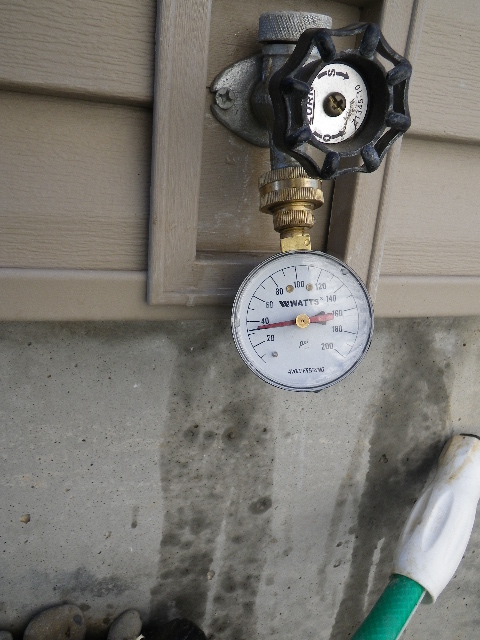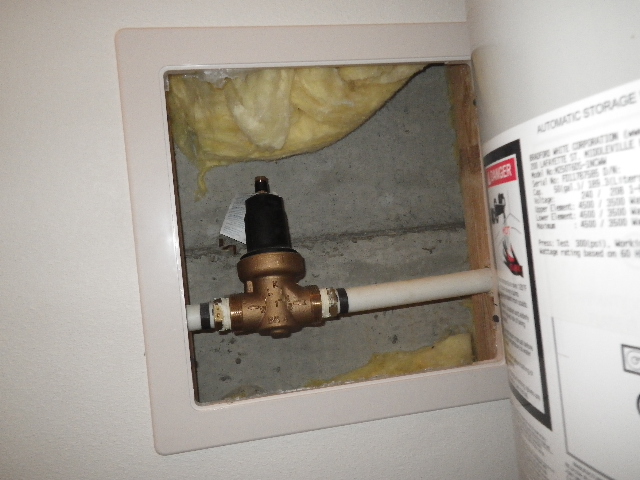
Video Sewer Scope and Old Pipes
If you have an older house, getting the someone to do a video sewer scope inspection can possibly save you thousands. The issue that I run into on a home inspection is that I do a visual non-invasive inspection (mostly) and the sewer line is buried under ground making it outside the scope of what I do.
Based on the age of the home, I can make some educated guesses on what material - ABS, cast iron, concrete, Orangeburg - you may have connecting your home to the city sewer or to the septic tank. What I have no way of telling you is what condition those pipes may be in.
When I have some concerns, I recommend you to a professional who has the equipment - a sewer scope which is a camera on a long flexible lead that gets pushed down the sewer line, sending back images to a video recording system.
Ideally, this operator will send the probe to the connection with the main sewer line or septic tank and report back what the material is and that it is in good condition. Unfortunately, as plumbing pipes reach the end of life period - and this is occurring more often with the post-WWII homes approaching 70 years old - we're seeing more failures.
The failures tend to aggregate into two categories. The first, material related, is simple degradation of the pipe. Orangeburg pipe - basically a toilet paper roll impregnated with tar - simply falls apart. Cast iron has rust issues.
The second category deals with time and the effects on the conditions around the pipe. One example is a failure of compaction in the soil that causes the pipe to shift or even break. This can be a problem with modern drainage piping - the lines often will develop sags that restrict flow. Another one, a particular problem in older neighborhoods are the wonderful mature trees.
I had a beautiful jacaranda tree in my front yard when I lived in Southern California. One of the reasons it was so spectacular was that it had a steady source of nutrients - my sewer. Trees are opportunistic and this one found all the joints in the clay piping and invaded at the seams where each hub piece was joined.
I bought that house before video sewer scope technology matured so I didn't get the advanced warming - the total tab was nearly $5,000 in repairs. Now that the technology is here, I recommend it to clients with older homes.
The actual wording that I use is " It is not unusual for older homes to begin to have problems with the waste drainage system. These systems are not readily visible but can be imaged using a video sewer scope system. Recommend having a video camera line inspection for potential blockages in the main sewer line."
It's up tot he client to make the call obviously - but it awfully cheap peace of mind.
Low Water Pressure for the Whole House
 Turning on the shower and discovering that you have such low water pressure that you can't get the shampoo out of your hair is frustrating - especially if, like my daughters, you have rather abundant hair. The good news is that it is relatively rare, much rarer than high water pressure.
The cause can be fixture specific, system specific (all the hot water lines are affected) or, in the case I had last week, affecting the whole house.
Turning on the shower and discovering that you have such low water pressure that you can't get the shampoo out of your hair is frustrating - especially if, like my daughters, you have rather abundant hair. The good news is that it is relatively rare, much rarer than high water pressure.
The cause can be fixture specific, system specific (all the hot water lines are affected) or, in the case I had last week, affecting the whole house.
Testing for water pressure is not part of the Washington State Standards of Practice for home inspectors. Still, it isn't hard to do and can give the inspector clues on conditions inside the home.
In the photo to the side, you can see the gauge is reading about 32 PSI (pounds per square inch.) The water pressure I expect to see in normal residential housing is 40-80 PSI so this was definitely on the low side. A quick check inside allowed me to verify that nobody was using water and pulling the pressure down.
There are a half dozen considerations that must be taken into account when I see a reading like this. The age of the home is the first. If this were an older home, I may be looking at a main supply line that is corroding/failing.
Likewise, the individual line to the bib might be failing so determining the material is important - some materials degrade faster than others.
The answer I don't want to arrive at is that the municipal supply is that low. Without a booster system, which isn't horribly expensive but still an additional cost, what you see is what you'll shower with.
I this case, none of the above applied. The home was relatively new, less than five years old, and had PEX plumbing in good condition. It also had a pressure regulator built into the water supply. The regulators are now required in one of  the municipalities that I work in and the plumber's assistant dutifully attached it. However, he forgot to make a simple adjustment to the knob on top.
the municipalities that I work in and the plumber's assistant dutifully attached it. However, he forgot to make a simple adjustment to the knob on top.
The buyer was with me, so it took me just a moment to show him how to make the adjustment. Since I do free return visits for my clients, we arranged to adjust it after he took possession. In the end, his low water pressure issue was an easy adjustment rather than a huge potential expense.
PS. For those wondering why I didn't adjust the pressure while I was there, all I can say is that I am a guest in someone's home. I like to leave it the way I found it (unless it is truly dangerous!). It would be like me coming is, deciding I don't like the curtains, and taking them down for ones with little yellow duckies that I like better. As a guest, I should have better manners.
Washington State License #215
Former SBCC Member, Former Chairman State Home Inspector Advisory Licensing Board.
